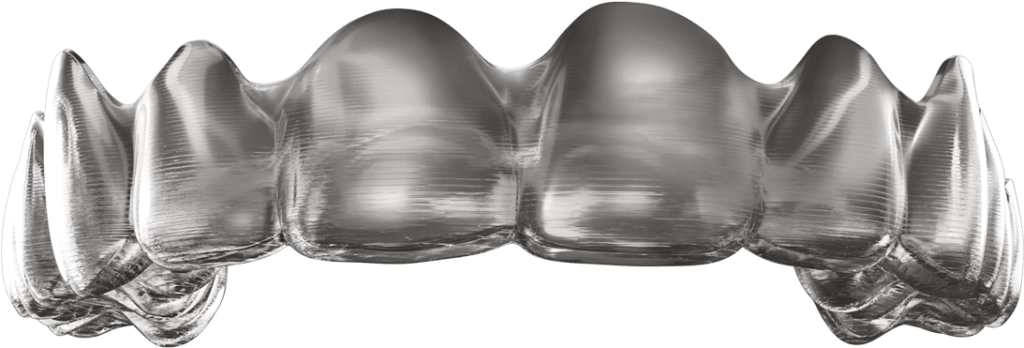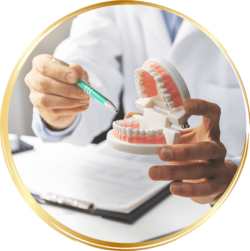

Invisalign is a popular orthodontic treatment that uses a series of clear, removable aligners to gradually straighten teeth. One of the key benefits of Invisalign is that the aligners are removable, making it easy to maintain good oral hygiene throughout treatment. It’s crucial to commit to wearing aligners for the recommended 20 to 22 hours each day to ensure the success of your treatment.
You’ll also need to properly care for your Invisalign clear aligners to ensure they stay clean, odor-free, and free of bacterial buildup. By following these tips from our Woodland Hills Invisalign provider, you can help ensure a successful and comfortable treatment experience.
To schedule an Invisalign consultation, contact our Woodland Hills dental office today at 818-491-7294.
Easier to care for than braces, Invisalign clear aligners are comfortable, removable, and invisible.

Before you put your Invisalign aligners back in your mouth, make sure to rinse them off thoroughly. Rinse them under cold water to remove any saliva or food particles that may be on them. You should also rinse your mouth out before putting them back in. This will help remove any bacteria or food particles that may be stuck in your teeth or gums.
When it comes to brushing your Invisalign clear aligners, it’s essential to use a soft-bristled toothbrush. You don’t want to use anything too harsh that could scratch or damage them. Gently brush your aligners, just as you would with your teeth. Be sure to rinse them off thoroughly with cold water afterward.
Invisalign Cleaning Crystals
In addition to rinsing and brushing, you can also use a cleaning solution to help keep your Invisalign aligners clean. Most dentists recommend using a clear, antibacterial soap with lukewarm water. Mix a small amount of soap with water and soak your aligners in the solution for around 15 minutes. Be sure to rinse them off thoroughly afterward to remove any leftover soap residue. Never use bleach or other hard chemicals to clean your aligners as these can damage the plastic and make it more visible.
Using a denture cleaner is an effective alternative to soap and water for cleaning Invisalign aligners, as it helps prevent bad odors and staining without the risks associated with diluted mouthwash solutions.
When not in use, for example, during meal times, keep the clear aligners in a case and let them air dry. Avoid using a cloth, as it can leave lint or other particles behind on your aligners.
Before reinserting, inspect your Invisalign clear aligners for any calcium or tartar buildup that can appear as a cloudy white film. If you see this, you may need a specialized product or help from your orthodontist to remove it.

Good oral hygiene is crucial for maintaining healthy teeth and gums. When using Invisalign, it’s essential to take extra care of your teeth to prevent cavities and other dental problems.
Not properly cleaning your teeth and Invisalign aligners can significantly increase the risk of tooth decay and gum disease.
Here are some additional tips and tricks on Invisalign care that can help you get the most out of your treatment:
The excitement of receiving new aligner trays is a key part of the journey towards straighter teeth, symbolizing a step closer to achieving your desired smile. So make sure you’re taking great care of your teeth and aligners for a beautiful smile!

While it may be tempting to use mouthwash to clean your trays, it’s strongly recommended that you don’t. Many types of mouthwash contain alcohol, which can cause the plastic to become brittle and crack or break, rendering them useless. Mouthwash can also create small cracks in the aligners, making it easier for bacteria and other harmful substances to build up.
You should clean your aligners regularly, at least twice a day, once in the morning and once before bed, to prevent staining and maintain their almost invisible appearance. It’s crucial to use gentle antibacterial soap and warm water to remove buildup and bacteria at least once a day to keep the trays clear and in good shape. It’s best to rinse them off whenever you take them out to eat or drink anything besides water. Taking these steps will help remove any food particles or bacteria that may be on the aligners, ensuring they remain clear and hygienic.
Yes, you can use a soft-bristled toothbrush to clean your aligners. Be sure to use non-abrasive toothpaste and rinse them off thoroughly afterward. It’s also important to be gentle when brushing your aligners, as brushing them too hard can scratch or damage the plastic. Be sure to use a light touch and gentle circular motions to help remove any buildup.
No, it’s not recommended to use hot water to clean your aligners. Hot water can warp the aligners’ plastic, causing them not to fit properly. This can not only make your treatment less effective but can also be uncomfortable to wear. Instead, stick to rinsing with cold water or lukewarm water when using a cleaning solution to help keep your aligners clean.
I understand the information disclosed in this form may be subject to re-disclosure and may no longer be protected by HIPAA privacy regulations and the HITECH Act.
